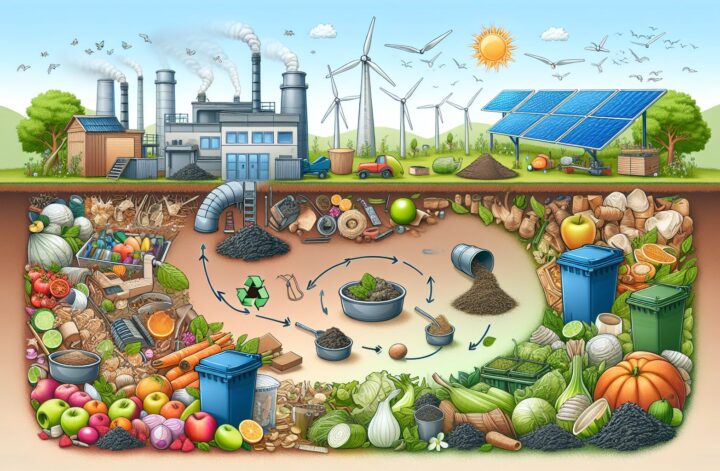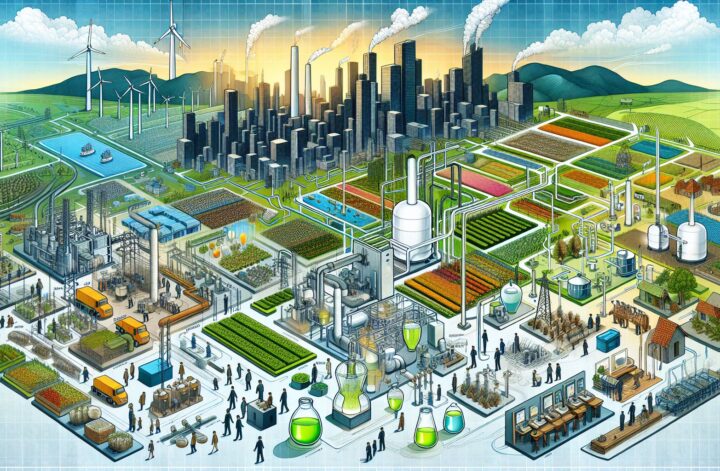Over the past several decades, the environmental and climate impacts of human activities have become increasingly apparent and urgent. A significant portion of these impacts is attributable to the emission of greenhouse gases (GHG) such as carbon dioxide (CO2) and methane (CH4). Among them, methane is particularly potent, with a global warming potential approximately 25 times greater than that of carbon dioxide over a 100-year period^[1^]. One key strategy for reducing greenhouse gas emissions and mitigating climate change involves the capture and utilization of methane – a topic that will be discussed in depth in this article.
1. What is Methane Capture?
Methane capture, also known as methane recovery or methane sequestration, is a process that involves capturing or collecting methane emissions from various sources before they are released into the atmosphere. This methane can then be used as a source of energy, thus reducing the demand for fossil fuels.
Methane capture can occur in a variety of contexts, from large-scale industrial facilities to smaller, local operations. It can also occur naturally in some environments, such as wetlands and other aquatic ecosystems. The mechanisms through which methane is captured can vary widely, ranging from physical capture and storage processes to biological processes. The latter involves the use of methane-consuming organisms, often known as methaneotrophs.
2. Why is Methane Capture Crucial?
Methane capture is crucial for several reasons. As mentioned earlier, methane is a potent greenhouse gas, with a global warming potential far greater than that of carbon dioxide. Thus, capturing methane can significantly mitigate the impacts of global warming and climate change.
Moreover, methane is a valuable source of energy – in fact, it’s the primary component of natural gas. When methane is burned for energy, it emits less carbon dioxide per unit of energy produced than coal or oil. Therefore, capturing and using methane can help reduce demand for other, more carbon-intensive fossil fuels.
In addition, some countries and large corporations have begun to put a price on carbon, incentivizing efforts to reduce greenhouse gas emissions. Methane capture can therefore have economic benefits for those who undertake it.
3. Technologies used in Methane Capture
Various technologies are used in methane capture. These technologies range from fairly simple techniques to more complex systems. One example is gas collection systems used in landfills. These systems involve the placement of a series of wells and pipes that collect landfill gas, a significant portion of which is methane. This gas can then be transported to a facility where it is burned for energy, captured for storage, or purified for use in natural gas pipelines.
Another technology associated with methane capture is anaerobic digestion. This involves the breakdown of organic matter in an oxygen-free environment by microorganisms, a process that generates methane. The methane can then be captured and used as a source of renewable energy^[2^].
Moreover, in some large-scale industrial and municipal wastewater treatment plants, a process called anaerobic sludge digestion is used. This process also generates methane, which can be captured and used for energy.
4. Methane Capture and Renewable Energy
Captured methane can be used as a source of renewable energy. When methane is burned for energy production, it generates heat and light, which can be harnessed for power generation. This can be done in various ways, such as through a process called combined heat and power (CHP).
Moreover, in some cases, the captured methane can be purified and injected into natural gas pipelines. This can help make the grid more renewable by displacing the use of fossil natural gas. In some cases, this renewable natural gas (RNG) can be used as a vehicle fuel, reducing emissions from the transport sector.
5. Challenges in Methane Capture
Despite its benefits, methane capture is not without challenges. For example, methane capture technologies can be expensive to implement and maintain. Moreover, the quality and composition of methane captured from different sources can vary, which may require additional processing to make it suitable for certain uses.
Additionally, there’s often a lack of infrastructure for storing or transporting captured methane, especially in remote or rural areas. This can make it difficult to utilize captured methane effectively.
Despite these challenges, methane capture represents a key strategy for mitigating climate change and reducing greenhouse gas emissions. As research and technology progress, it’s hoped that these challenges can be addressed, leading to widespread and effective methane capture and utilization.
6. The Future of Methane Capture
As the urgency to tackle climate change increases, so does the importance of methane capture. With advancements in technology, and with supportive policies and regulations, we can expect to see more widespread and effective use of methane capture technologies.
For example, advancements in biotechnology could lead to the development of more effective methanogenic organisms or systems – those that convert CO2 and other components into methane, which can then be captured.
Moreover, increased research and development could lead to the development of more efficient and cost-effective methane capture technologies.
In conclusion, while methane capture currently faces various challenges, it represents a key strategy in the battle against climate change. By capturing and utilizing this potent greenhouse gas, we can reduce our emissions and transition towards a more sustainable and low-carbon future.
^[1^]: IPCC, 2013: Climate Change 2013: The Physical Science Basis. Link Here
^[2^]: U.S. Environmental Protection Agency. “Turning Food Waste into Energy”. Link Here




